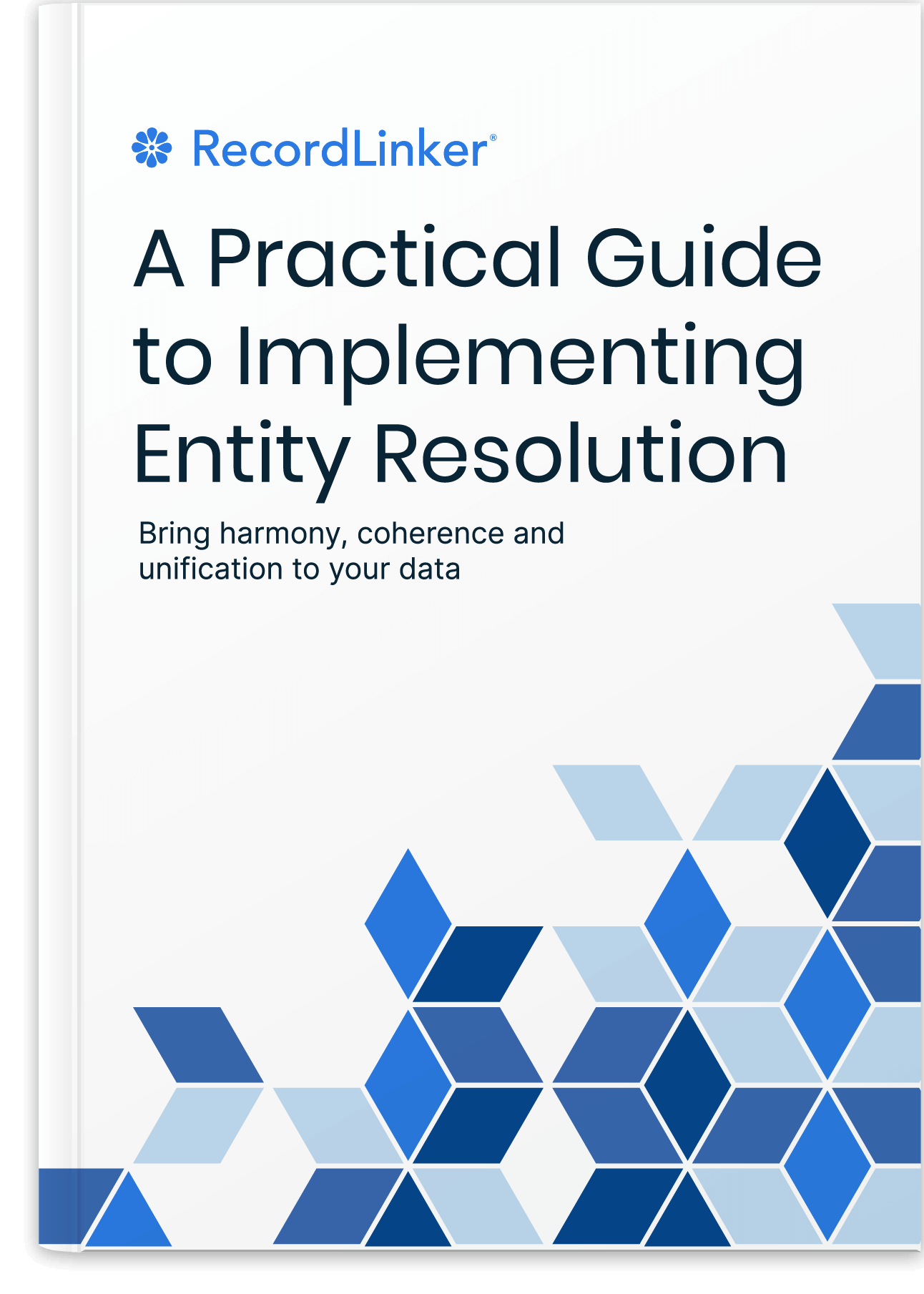Non-Disruptive Enterprise Data Management & Administration

The Enterprise Data Landscape
Large organizations run on multiple core systems, each serving specific business needs and operating under different constraints. The idea of an MDM, while appealing, can lead to costly implementations, operational disruptions, and diminishing returns.
Multiple Systems Reality
Enterprise data environments evolved organically to serve specific business needs. Manufacturing operations require different systems than financial services; healthcare providers have different needs than retail operations. Each system maintains its own data models, update cycles, and operational requirements – because these differences serve essential business purposes.
Consider a global manufacturer running SAP in Europe, Oracle in North America, and a specialized system in Asia. Each instance maintains its own vendor master, customer records, and product catalogs. These are simply adaptations to local business requirements, regulatory frameworks, and operational needs.
Enterprise organizations typically maintain several systems of record, each serving as the authoritative source for specific types of data. A manufacturing company might have:
- ERP system for inventory and production data
- CRM system for customer relationships
- HR system for employee data
- Financial system for accounting records
Enterprise systems naturally organize themselves into operational hierarchies. At the foundation, core transactional systems like ERPs, CRMs, Agency Management Systems etc. serve as primary sources of truth, handling daily operations and maintaining authoritative records.
There are also instances in which systems address different aspects of data and facades of your data needs. Think about a CRM for communication with customers vs. a customer service ticketing system like Zendesk. These supporting systems manage specialized functions, often addressing different facets of a certain data domain. Then business intelligence systems provide analytical capabilities.
Your core business systems use different data models in line with their purpose! Nothing good will happen if you try to override that with a centralized MDM solution.
What might appear as unnecessary duplication across systems often serves essential business purposes. A customer record in a CRM system needs different attributes than the same customer’s record in a billing system. Attempting to force these distinct needs into a single standardized model often creates more problems than it solves.
Why Traditional MDM Fails in Enterprise Data Management
Traditional MDM solutions fail exactly because they fight against that operational reality. They attempt to impose a new “master” system above existing core systems, creating several fundamental problems:
First, they disrupt operational autonomy. Core systems need to maintain authority over their data to function effectively. When MDM solutions try to override this authority, they create conflicts that impact daily operations. Attempting to create a single source of truth above operational systems ignores the reality that different systems need to maintain their own versions of truth to function effectively.
Second, integration complexity grows exponentially. Each connected system requires custom integration work, error handling, and ongoing maintenance. What starts as a straightforward centralization project quickly becomes a complex web of interfaces and reconciliation processes.
Third, performance suffers as systems struggle to maintain synchronization. Real-time updates create system bottlenecks, while batch processes lead to data inconsistencies. Organizations often end up with worse data quality than they started with as complex reconciliation processes introduce new errors and delays.
System-Specific Data Management: Understanding Transactional Systems
Core business systems serve as the backbone of daily operations. Whether processing insurance claims, managing manufacturing operations, or handling financial transactions, these systems maintain the authoritative record of business activities. Their data models reflect operational requirements rather than analytical ideal.
These systems must maintain their authority over operational data. When a transaction needs processing or a service needs delivery, core systems must have the final say on what’s true and what isn’t. Attempts to override this authority often lead to operational disruptions and data inconsistencies.
Effective data management requires clear ownership at both system and domain levels. Local teams need authority over their operational data while adhering to enterprise standards.
The Administrative Reality in Enterprise Data Management
Data administrators face a fundamental challenge: core systems weren’t designed with large-scale data administration in mind. What works for daily operations becomes a severe limitation when managing reference data at scale. Simple tasks like updating multiple records or maintaining data consistency across system boundaries become unnecessarily complex and time-consuming.
Core System vendors don’t equip data admins with tools fit for large scale. Capability for proper data management may be the true reason holding back your data.
This challenge can’t be solved by adding more administrators or creating elaborate spreadsheet-based processes. The core issue is that enterprise systems lack tools for efficient data administration. System interfaces force administrators through complex sequences of screens and menus for even basic tasks, making bulk operations particularly problematic (if available at all).
Maintaining data quality across multiple systems requires sophisticated controls. Organizations need validation rules, error prevention mechanisms, and audit trails. These requirements grow more complex as data moves between systems and undergoes transformations.
A New Approach: Wingman MDM
Traditional MDM solutions try to impose a new layer of complexity above existing systems. The Wingman approach takes a fundamentally different path: enhancing organizations’ ability to manage data within their core systems rather than trying to supersede them.
The Wingman Philosophy
Instead of attempting to replace or override existing systems, Wingman MDM works alongside operational systems as a trusted companion. Like a wingman in aviation who supports the lead pilot, this approach enhances capabilities while respecting system authority. The goal is to make existing systems more effective, not to create new masters.
Replace only what needs to be replaced for a critical operational reason.
Enhance data management for systems that serve their purpose well.
How RecordLinker Implements the Wingman Approach
RecordLinker embraces this Wingman philosophy through several principles:
Respecting System Authority
Rather than creating competing data repositories or requiring architectural changes, RecordLinker works alongside your existing systems, maintaining them as the absolute source of truth. Your established business processes and workflows remain unchanged, eliminating the disruption typically associated with data management initiatives.
All thanks to reliance on bi-directional API synchronization between RecordLinker and your core systems. RecordLinker becomes a data administration hub with a clean interface enabling your data admins in their tasks.
Seamless Integration Strategy
The integration approach reinforces this non-disruptive philosophy. Using API-based integration that works within your system’s existing capabilities, RecordLinker avoids heavy middleware or complex integration layers. All that’s needed is API read-and-write access to your core system. Changes are controlled through a careful approval workflow, rather than forcing real-time synchronization that could impact performance.
Gradual Implementation Path
Implementation follows a controlled path that contrasts with traditional “big bang” deployments. You can start with a single entity type and expand incrementally, working together with our team. Your data admins continue working in their familiar environments while gradually adopting enhanced capabilities.
There is no complete paradigm shift, extensive retraining, and hiring a rooster of technical data experts and engineers needed to maintain anything or solve problems resulting from the solution itself.
Maintaining Operational Continuity
API-based synchronization ensures no disruption to daily operations, no impact on system performance, and no modifications to existing data flows. This preserves the stability of your core business processes while adding new capabilities for data administration.
Built-in Risk Mitigation
A draft mode allows administrators to prepare and review changes before they affect production systems. Changes made inside RecordLInker can always be rolled back to match what’s in your system, ensuring that improvements to data management practices don’t compromise operational stability or data integrity.
Work with RecordLinker on Your Enterprise Data
This targeted enhancement strategy delivers immediate benefits without the risks of complete system replacement. Data administrators gain efficiency while core systems maintain their authority.
If you are curious about RecordLinker’s capabilities, feel free to contact us. To really help you, we need to discuss your needs, because we don’t offer an off-shelf cookie-cutter SaaS. We need to understand your data model, systems you want to support, their business rules, and opportunities for API integration. There are no hidden added costs for configuring RecordLinker.
If you would like to explore what RecordLinker can do for your data administration, feel free to contact us.
Practical Implementation with Focused Approach
Successful implementation of enhanced data management capabilities requires a thoughtful, measured approach. Organizations should begin by identifying areas where administrative overhead is highest and data quality issues are most impactful. This might be vendor management in procurement, customer data in sales, or employee records in HR.
Once priority areas are identified, implementation should proceed gradually, allowing your data teams to adapt. This measured approach enables organizations to validate benefits and adjust course as needed. Many organizations find that starting with a single domain or department helps build confidence and expertise before expanding.
Measuring and communicating benefits is crucial for maintaining momentum. We advise to establish clear metrics before implementation begins. These might include time saved in administrative tasks, reduction in data errors, or improvement in process efficiency. Regular reporting on these metrics helps maintain stakeholder support and guides further improvements.
Success depends heavily on alignment between technical capabilities and business needs. Organizations must ensure that enhanced data management capabilities directly support business objectives while maintaining system authority and operational efficiency. This alignment, combined with proper governance and clear success metrics, enables improvement without the risks of traditional MDM approaches.
Enterprise Data Management Wrapped Up
The future of enterprise data management lies not in pursuing perfect centralization but in practical, focused improvements that respect system autonomy while enhancing administrative capabilities. Organizations that embrace this reality-based approach position themselves for sustainable improvement without the risks and costs of complete transformation.
Instead of pursuing a hyperintegrated MDM with a Single Source of Truth on top of your ecosystem, organizations can enjoy quick improvements to data quality for each of the core systems. Enhancement to data where it is needed and in alignment with the purpose of a specific system.
Success comes through careful attention to system-specific needs, strong governance, and a commitment to practical enhancement rather than theoretical perfection. The Wingman MDM approach offers a path that balances integration needs with system autonomy, delivering quick real benefits while minimizing risk and disruption.
Suggested Reading about Data Management
Take a look at our recommended reading list for practical insights and easy-to-understand resources to help you establish good data practices in your organization. Enterprise Data Management is not simple – learn foundational concepts to discover helpful solutions to common data challenges.
<li”>Matching Names of Companies, Vendors, Suppliers
Problems with Data Management and Migrations?
Are you acquiring businesses, migrating operations, or consolidating similar business systems?
RecordLinker is not just a data management platform! We are primarily known for helping some of the top 100 US P&C brokers with their data conversion (mapping reference data from one acquired system to the destination system post-M&A). Recordlinker uses Machine Learning to make data conversion painless. Let’s discuss your data needs – contact us!
Free Book: Practical Guide to Implementing Entity Resolution
Interested in implementing an in-house record matching solution with your own development team without using any outside vendors or tools?

You can reliably cut conversion project times with ML from weeks to days!





